Bluehead Chub: The Indians believed that this fish eats rocks. In fact, she builds giant nests! For what? (10 photos)
“A long time ago, a handsome prince swore his eternal love to the princess. “Yes, I’m ready to eat earth for you!” - he declared in the heat, not even suspecting that these words were heard by the evil witch, who was jealous of their happiness. The witch cast a spell, and he turned into a fish, doomed to forever carry stones in his mouth for his family nest.
Sounds plausible, doesn't it? Okay, how else, other than a curse, can you explain the absurd 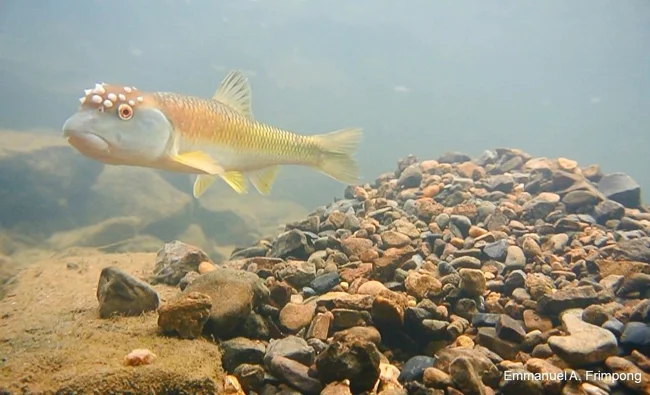
The chub belongs to the carp family. But it doesn’t look like a carp at all! Look at him: he is still shocked by what happened to him! A large head, a large mouth, small bulging eyes and an eternal confused expression on the face called “how did I end up here?” 
The fish live in reservoirs of the southeastern United States, mainly in the Mississippi basin. In their homeland, chubs are called “chub”. Males of the “chub” know better than anyone that 16 centimeters is the norm: this is the length of the average chub. Only a few alphas can boast of all 25. 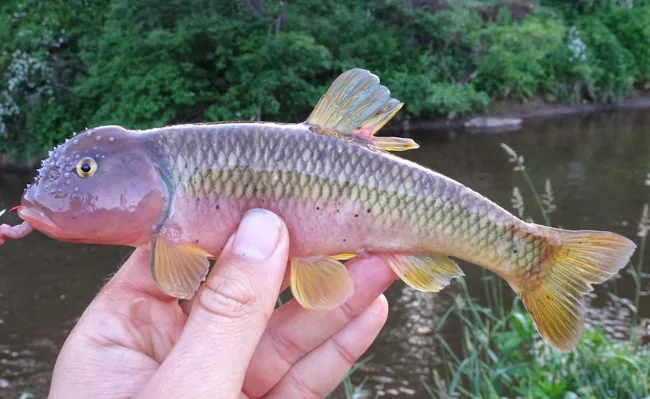
The former prince had to change his habits. Pheasants and truffles are not found underwater, so he switched to a diet of midges, larvae and algae. For most of the year, he spends most of his time getting food for himself. But during the breeding season everything changes. Including the chub itself. 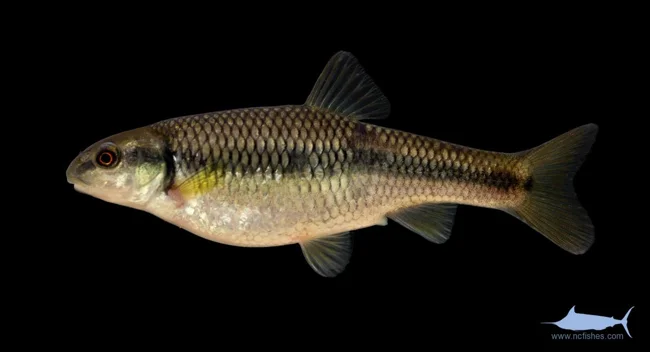
This is what the chub looks like before the transformation.
The awkward appearance of the “chub” becomes completely cartoonish: his head swells (apparently from all these marital worries), up to 25 characteristic tubercles grow on the top of his head, and his muzzle turns blue - obvious evidence that this is a person of “blue blood”. But “trouble with the head” is not a problem at all compared to the troubles that fall on the blue-headed chub, because the time comes to take care of the offspring. And our hero knows how to do this like no one else. 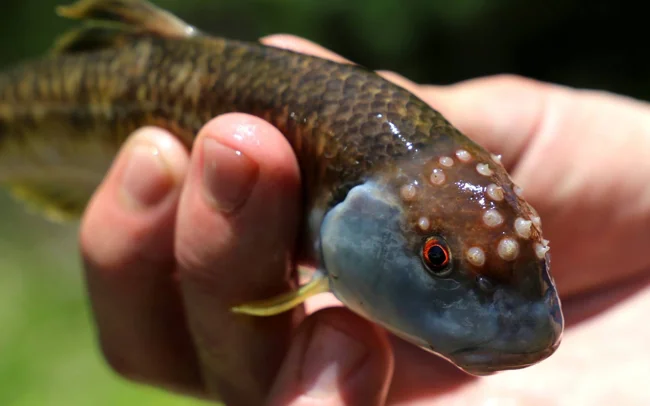
This is what a Golawal man looks like in the prime of his life.
You can’t plant a tree under water, you can’t raise your son properly, so the chub devoted all his strength to the skill of building houses. From April to June, males build nests for future eggs. For this purpose, the fish patiently carries and piles gravel and small stones with its own mouth. Sometimes the boulders are almost larger than his own head. 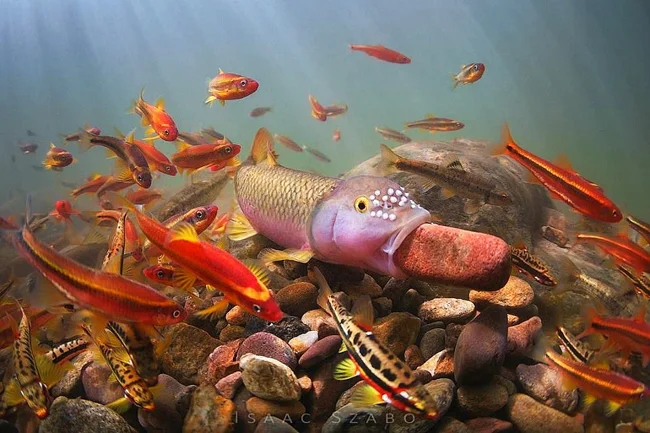
At one time, the Indians believed that carp fed on stones. They could not even imagine that huge mounds under water could be built by fish. The largest known chub nests consisted of more than 10,000 stones and were about 2 meters in diameter and up to half a meter in height. 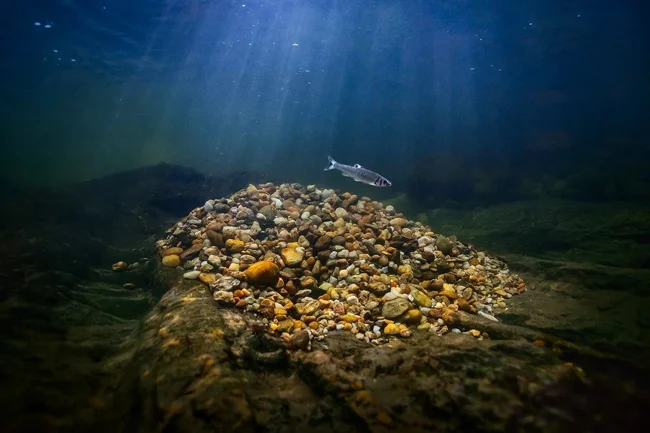
Skeptics don't believe that people in ancient times could build pyramids, pfft - look what one fish can do!
When the construction work is completed, the marriage ceremonies begin. Females choose the man whose “palace” is more impressive and reliable. After the process of intercourse, the caring dad himself buries the eggs between the stones. For several months, he protects the nests from enemies and regularly cleans them of silt and debris. 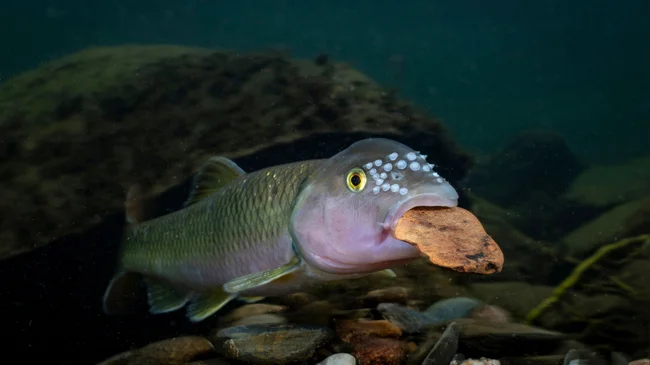
Time to collect stones.
The chub is not a valuable commercial species, but relatively recently scientists have discovered another, completely unique value of the chub for the local ecosystem. The fact is that other cyprinids, for example, small minnows, also highly value the architectural abilities of our hero. And they brazenly lay their eggs in the “huts” that the hardworking chub father built with sweat and blood. “Underwater cuckoos” do not care about their children. After all, the blue-headed chub will do all the work for them, protecting its own clutch. 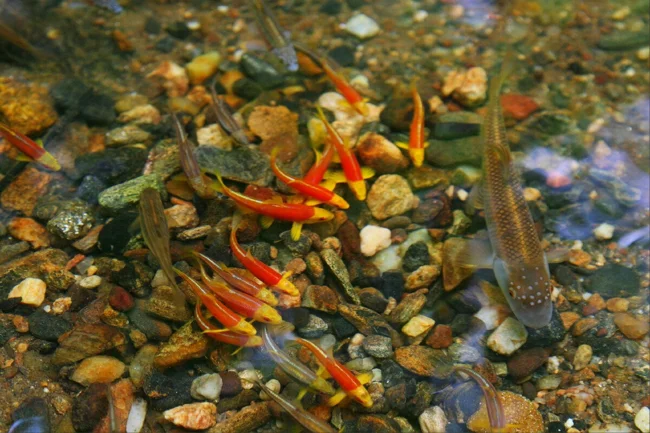
As a result, the researchers noticed that in the reservoirs where the builder chub appears, the population of dozens of species begins to rapidly increase. Some fish are so accustomed to this system that they do not even begin to reproduce in those reservoirs where there are no chubs. In science, this type of behavior is called “nested partnership,” although in reality it should be called racketeering. 
For such work, the blue-headed chub does not receive any dividends. He patiently puts up with the “freeloaders.” But such an unequal union gives us an impressive sight: in the spring, hundreds of colorful, bright fish crowd in line for a free place in a kindergarten, built through the efforts of one caring dad.
